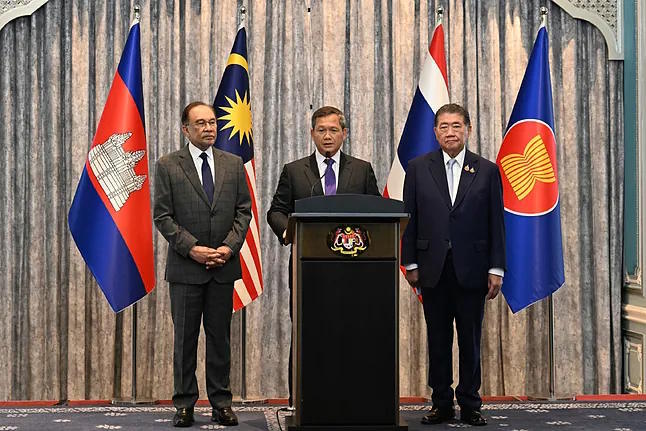After five days of intense fighting along the most explosive border in Southeast Asia, Thailand and Cambodia have agreed to a ceasefire, the sustainability of which remains uncertain. This was made possible as their leaders held their first face-to-face meeting on Monday in Kuala Lumpur, Malaysia. Other significant actors also played a role in the successful peace negotiations, as seen in the setting of the meeting: a triangle formed by the Thai interim leader, Phumtham Wechayachai, facing the Cambodian Prime Minister, Hun Manet, both maintaining a prudent distance, separated by a row of flowers. Positioned at the apex was the discussion moderator, Malaysian Prime Minister Anwar Ibrahim, who was accompanied by diplomats from the United States and China.
"Both parties have expressed their position and willingness for an immediate and unconditional ceasefire starting at midnight," announced Malaysian Ibrahim at a press conference following the summit.
The bloodiest border conflict in the last 14 years between the two neighbors has left over thirty dead and more than 270,000displaced. "I trust that the results of the talks will provide many opportunities for hundreds of thousands of people on both sides to return to normalcy," stated Cambodian leader Hun Manet.
Over the weekend, in addition to artillery exchanges along various points of the 817-kilometer border, diplomacy also intensified. China and other regional neighbors attempted to mediate. However, Thai and Cambodian authorities did not agree to peace talks until Donald Trump got involved with his unique approach: if Bangkok and Phnom Penh did not discuss a ceasefire, they could forget about negotiating Washington's tariffs.
The U.S. President has taken full credit for pushing Thailand and Cambodia to sign a truce, just as he did when India and Pakistan, two nuclear powers, ended several days of fighting earlier in the summer in the disputed region of Kashmir and several border provinces.
